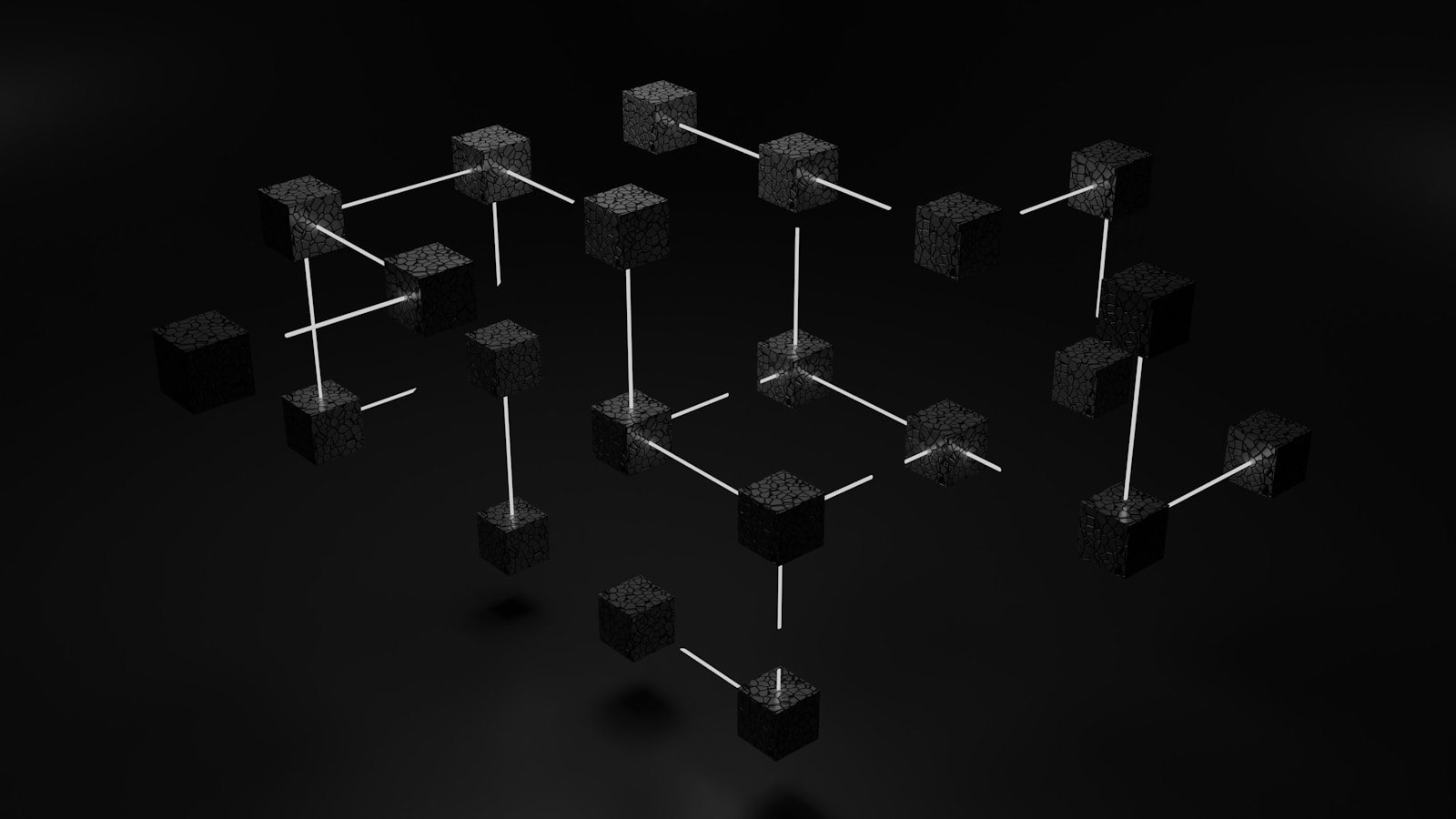Establishing robust communication channels between individual nodes enhances the performance and reliability of decentralized ledgers. By enabling devices to interact without relying on centralized servers, these systems reduce latency and increase fault tolerance. Each participant acts as both a client and a server, exchanging information directly to maintain ledger synchronization and validation.
Maintaining efficient data transfer among distributed participants requires optimized protocols that handle message propagation and consensus updates swiftly. When every node can initiate or receive transmissions independently, the system becomes resistant to single points of failure and censorship, supporting continuous operation even under adverse conditions.
For practical applications, consider how cryptocurrency wallets synchronize transaction histories by connecting with multiple peers simultaneously. This approach ensures rapid confirmation times and up-to-date balances without depending on intermediaries. Adopting such architectures promotes transparency while empowering users with greater control over their interactions within the shared database.
Peer-to-peer networks: direct blockchain connections
For secure and efficient data exchange in decentralized systems, the architecture relies heavily on multiple independent nodes that communicate through a peer-based protocol. This approach eliminates the need for central servers by enabling each participant to interact directly with others, forming a resilient web of information flow. Such distributed frameworks ensure that every node maintains a synchronized ledger copy while validating incoming transactions, thus enhancing security and transparency.
Communication within these distributed environments occurs through established channels where nodes establish trust based on cryptographic proofs rather than intermediaries. Each participant sends and receives updates concurrently, optimizing propagation speed across the entire infrastructure. The absence of hierarchical routing reduces latency and network bottlenecks, allowing for real-time consensus updates without relying on centralized points vulnerable to failure or censorship.
Architecture and Node Interaction
The system’s robustness depends on interconnected participants who act both as clients and servers simultaneously, fostering mutual data sharing without intermediaries. By maintaining equal status among these entities, the model supports redundancy and fault tolerance; if one element goes offline, others compensate by redistributing workload seamlessly. This is exemplified by popular implementations like Bitcoin’s network where thousands of nodes continuously broadcast transaction data to keep ledgers consistent worldwide.
To optimize communication paths, protocols use algorithms that determine optimal peers for message transmission based on proximity or reliability scores. For instance, Ethereum employs discovery protocols to dynamically map reachable nodes, improving efficiency while avoiding excessive overhead from redundant transmissions. These mechanisms enable swift data dissemination even under heavy traffic conditions or partial outages.
- Decentralization: Guarantees no single authority controls transaction validation or ledger updates.
- Node roles: Include validators, miners, or light clients depending on resource capacity and network demands.
- Communication protocols: Utilize TCP/IP alongside custom layering for secure peer identification and message integrity verification.
An illustrative example can be found in file-sharing applications such as BitTorrent which shares similar principles by distributing file chunks across many users simultaneously without centralized storage points. Applying this concept to ledger synchronization ensures faster block propagation with reduced risk of corruption or manipulation during transit.
Understanding these interactions encourages confidence when exploring decentralized platforms since it highlights how trust emerges naturally from collaborative validation rather than imposed authorities. Readers are invited to experiment with lightweight client software connecting directly to multiple counterparties to witness firsthand how data consistency is preserved through collective effort.
How nodes establish direct links
Nodes in decentralized systems initiate communication by discovering peers through predefined protocols such as DNS seeds, hardcoded lists, or distributed hash tables. After identification, they perform handshake procedures to verify protocol compatibility and share network metadata. This initial exchange ensures that both parties can synchronize data effectively and maintain a secure channel for future interactions.
Following successful handshake verification, participants open persistent pathways enabling continuous information flow. These pathways rely on transport layer protocols like TCP/IP, which support reliable message transmission. Maintaining these channels requires periodic health checks using ping-pong mechanisms or keep-alive signals to detect and recover from interruptions promptly.
Mechanisms of peer discovery and link formation
Discovery methods vary depending on the system’s design but often include querying bootstrap servers or employing gossip protocols where nodes propagate address lists among themselves. For example, Bitcoin clients use DNS seed nodes to fetch initial peer addresses before expanding their local cache through active scanning. This approach reduces dependency on centralized entities while enhancing resilience.
The establishment of a communication path involves exchanging version messages containing protocol versions, supported features, and timestamps. Nodes also negotiate encryption parameters if applicable, ensuring confidentiality and integrity of transmitted data. Once synchronized, the participants begin relaying transactions and ledger updates directly, accelerating propagation efficiency compared to routing through intermediaries.
In practice, firewalls or NAT devices may obstruct inbound traffic; thus, nodes implement techniques like NAT traversal via UDP hole punching or leverage relay services when necessary. Additionally, some implementations prioritize connections based on latency measurements or network topology awareness to optimize throughput and reduce delays within the system’s mesh.
To summarize the process technically:
- Peer discovery: Obtain potential endpoint addresses through bootstrap mechanisms or peer sharing.
- Handshake initiation: Exchange compatibility details including protocol versions and capabilities.
- Path creation: Establish transport-level sessions with error correction and acknowledgment features.
- Sustainment: Monitor connection vitality using periodic signaling methods.
- NAT/firewall traversal: Apply advanced networking strategies to enable bidirectional communication where direct access is blocked.
This systematic approach allows decentralized ledgers to maintain robustness while facilitating scalable synchronization among widely distributed participants without relying on centralized routing authorities.
Data propagation in P2P blockchains
Efficient data dissemination within decentralized systems relies on the architecture of interconnected devices that share information without intermediaries. In such distributed frameworks, each participant acts as both a sender and receiver, forwarding transaction data and updates to neighboring units. This method ensures redundancy and resilience, enabling rapid spread of new blocks or transactions through multiple routes simultaneously, thereby minimizing latency.
The topology of these decentralized structures significantly impacts performance metrics like speed and reliability. For instance, mesh-like arrangements allow nodes to establish multiple links with peers, enhancing fault tolerance but increasing overhead. Conversely, more linear or tree-like layouts reduce communication burden yet risk bottlenecks if key pathways fail. Protocols such as gossip algorithms facilitate probabilistic message exchanges where participants randomly select neighbors to share updates, balancing efficiency with coverage in large-scale deployments.
Mechanisms and challenges in data transmission
Nodes operating within these ecosystems maintain synchronized ledgers by continuously exchanging newly minted data packets through simultaneous bilateral interactions. Each update must be verified for authenticity before propagating further to prevent the introduction of invalid entries that could compromise consensus integrity. Practical implementations employ techniques like Bloom filters to optimize bandwidth usage when relaying transactions, reducing unnecessary retransmissions among peers.
However, factors such as network latency disparities and varying computational capacities influence propagation speed unevenly across participants. Case studies from prominent cryptocurrency projects reveal that geographically dispersed nodes experience delayed receipt times compared to those located closer together or connected via high-speed links. Adaptive protocols dynamically adjust peer selection strategies based on observed responsiveness metrics, improving overall synchronization without sacrificing decentralization principles.
Security challenges in direct communication within decentralized systems
Ensuring secure exchanges between individual nodes is fundamental for maintaining trust and integrity in decentralized environments. When participants interact without intermediaries, each endpoint becomes both a potential target and a point of vulnerability. This setup demands rigorous authentication protocols to prevent unauthorized access and mitigate risks such as identity spoofing or Sybil attacks, where malicious actors flood the system with counterfeit identities to disrupt consensus mechanisms.
Another significant risk stems from the openness of these distributed platforms, which can expose participants to man-in-the-middle attacks during data transmission. Without encryption layers and robust key management, sensitive information exchanged across peers may be intercepted or altered. Implementing end-to-end cryptographic safeguards is critical for preserving confidentiality and ensuring that transactional data remains untampered throughout its journey.
The architecture of mesh-like participant groups often relies on dynamic discovery methods to locate and establish links among entities. While this flexibility enhances resilience, it also introduces challenges related to network poisoning, where adversaries inject false routing information to isolate honest contributors or manipulate data flow paths. Continuous validation of peer credibility through reputation systems or stake-based verification helps counteract such threats by filtering out unreliable nodes before they affect the broader ecosystem.
Latency variation and inconsistent connectivity among individual units can further complicate security considerations. Delays in propagating updates might enable double-spending scenarios or replay attacks if timestamping and sequence controls are improperly managed. Employing synchronized clocks alongside nonce values in message exchanges strengthens defenses against replayed transactions by ensuring freshness checks at every interaction layer.
Resource exhaustion remains a persistent concern when multiple endpoints communicate directly without centralized moderation. Attackers may launch denial-of-service attempts by overwhelming nodes with excessive requests, leading to degraded performance or temporary outages. Rate limiting combined with adaptive firewall rules tailored to detect abnormal traffic patterns is essential for preserving availability while accommodating genuine network activity.
Finally, transparency inherent to these open frameworks can unintentionally leak metadata about user behavior or transaction patterns, compromising privacy despite pseudonymity features. Integrating advanced obfuscation techniques such as onion routing or zero-knowledge proofs allows participants to mask their involvement in specific operations without sacrificing verifiability, striking a balance between accountability and anonymity within decentralized ecosystems.
Impact of Network Topology on Latency
Latency in decentralized systems primarily depends on how nodes are organized and communicate with each other. In p2p ecosystems, a mesh-like arrangement where each participant maintains multiple simultaneous links can significantly reduce delays by enabling parallel data transmission paths. This structure minimizes the number of hops needed for information to reach its destination, thus accelerating transaction propagation and consensus processes.
Conversely, linear or poorly connected topologies increase latency due to bottlenecks forming at intermediary nodes. For example, if several nodes rely heavily on a few central points to relay messages, those points become chokeholds that slow down communication speed. Ensuring diverse and redundant connections among peers improves resilience and lowers overall delay by distributing traffic more evenly across the system.
Key Factors Affecting Message Delivery Time
The physical distance between participants is a fundamental cause of latency differences; however, topology has a profound influence beyond geography. Networks arranged as random graphs typically achieve lower average path lengths compared to ring or star configurations. A practical case study from Ethereum’s evolving network architecture shows that increasing the average degree of node connectivity reduces block propagation time by up to 30%, enhancing synchronization efficiency.
- Node Degree: Higher connectivity per node allows multiple concurrent routes.
- Clustering: Dense clusters facilitate rapid local dissemination but may isolate isolated segments unless bridged properly.
- Routing Protocols: Intelligent peer selection algorithms prioritize low-latency paths dynamically.
A well-designed overlay topology can leverage these aspects to balance load and minimize latency spikes caused by network congestion or node failures. Bitcoin’s implementation uses gossip protocols optimized for sparse yet robust connectivity, ensuring information reaches most participants within seconds despite global distribution.
The choice of network layout must consider trade-offs between latency optimization and resource consumption like bandwidth usage. Systems prioritizing minimal delay often accept higher overhead from maintaining numerous active links per participant. This approach benefits applications requiring near-instant confirmation times such as payment settlements or interactive smart contracts execution environments.
A practical recommendation is to implement adaptive mechanisms where nodes periodically assess connection quality metrics–latency, throughput, packet loss–and adjust their peers accordingly. This dynamic adjustment aligns the topology closer to an ideal form under current network conditions, thereby continuously reducing end-to-end delay without manual intervention. Such techniques have been successfully integrated into modern distributed ledger platforms to improve user experience while preserving decentralization principles.
Scaling P2P Blockchain Communication
Optimizing the scalability of decentralized data sharing relies heavily on enhancing node-to-node interaction methods. Prioritizing low-latency, high-throughput exchanges between participants minimizes delays and bandwidth bottlenecks, which are critical for maintaining consensus efficiency as the system grows.
Implementing multi-channel routing alongside adaptive message propagation strategies allows participant clusters to exchange information more effectively without overloading individual endpoints. For example, integrating gossip protocols with selective peer pruning can reduce redundant traffic while preserving network robustness.
Key Technical Insights and Future Directions
- Adaptive Topology Management: Dynamically adjusting the overlay structure based on real-time metrics improves resource allocation among participants, enabling smoother scaling beyond thousands of nodes.
- Layered Communication Models: Combining broadcast layers for transaction dissemination with targeted unicast channels for validation requests enhances throughput and reduces propagation delays.
- Efficient Data Propagation: Utilizing compact encoding schemes such as erasure codes or delta encoding limits bandwidth consumption during synchronization phases.
- Incentivized Relay Mechanisms: Introducing reward systems for nodes that optimize message forwarding encourages sustained participation and healthier data flow across the topology.
The future of distributed ledger communication will likely see stronger integration of edge computing resources to offload processing closer to data sources, reducing latency significantly. Additionally, cross-protocol interoperability efforts promise a more interconnected environment where heterogeneous participant groups can securely exchange information without centralized intermediaries.
As developers refine these scaling techniques, practical deployments must monitor emergent behaviors such as partition tolerance under stress and resilience against targeted disruptions. Educators and engineers alike should approach this domain incrementally–starting from fundamental concepts like transaction relay patterns before advancing to overlay optimization algorithms–to build confidence in managing complex decentralized systems.





